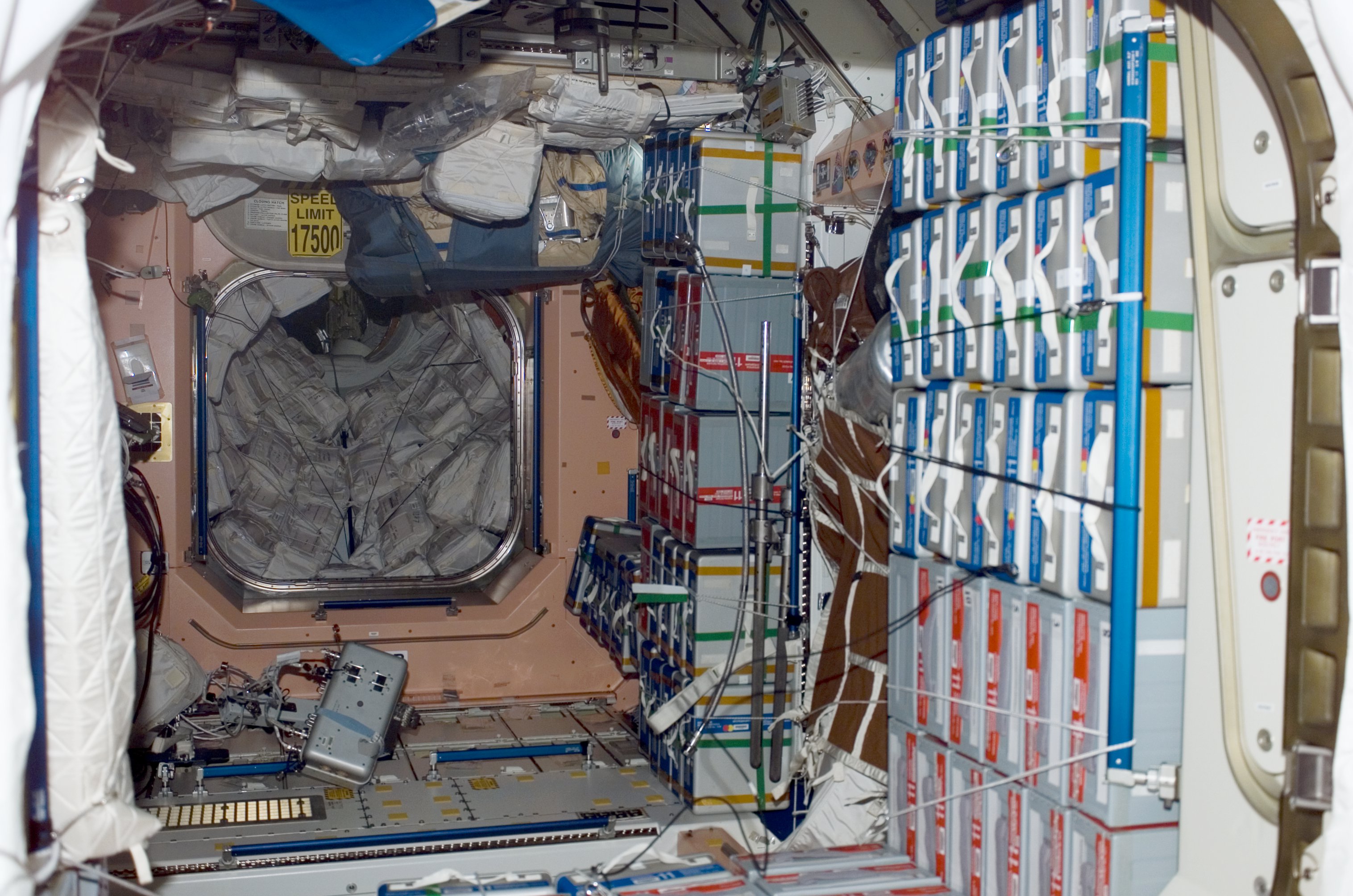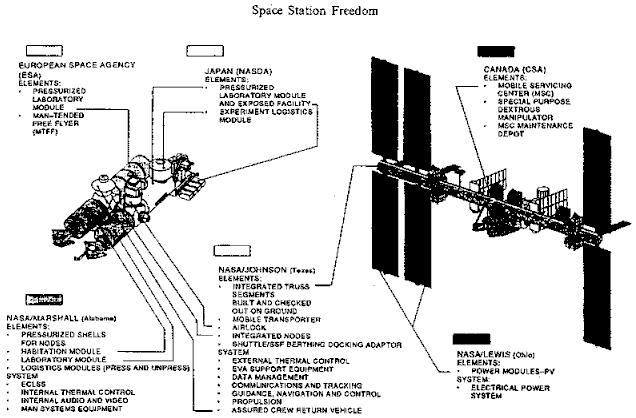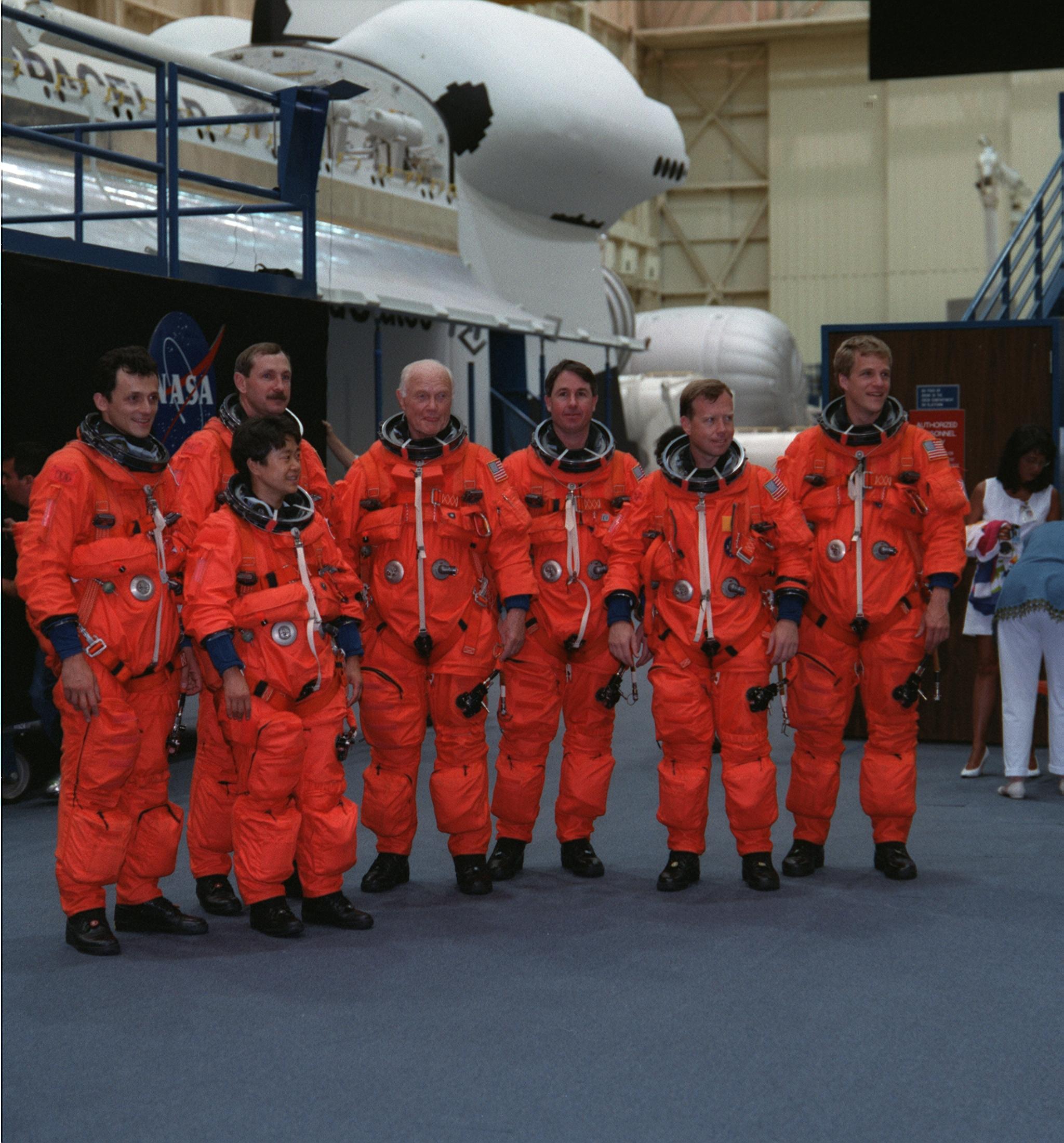|
STS-88
STS-88 was the first Space Shuttle mission to the International Space Station (ISS). It was flown by Space Shuttle Space Shuttle Endeavour, ''Endeavour'', and took the first American module, the Unity (ISS module), ''Unity'' node, to the station. The seven-day mission was highlighted by the mating of the U.S.-built ''Unity'' node to the Zarya (ISS module), Functional Cargo Block (''Zarya'' module) already in orbit, and three spacewalks to connect power and data transmission cables between the Node and the FGB. ''Zarya'', built by Boeing and the Russian Space Agency, was launched on a Russian Proton (rocket), Proton rocket from the Baikonur Cosmodrome in Kazakhstan in November 1998. Other payloads on the STS-88 mission included the IMAX Cargo Bay Camera (ICBC), the Argentine Scientific Applications Satellite-S (SAC-A), the MightySat 1 Hitchhiker payload, the Space Experiment Module (SEM-07) and Getaway Special G-093 sponsored by the University of Michigan. Crew Launch attempts ... [...More Info...] [...Related Items...] OR: [Wikipedia] [Google] [Baidu] [Amazon] |
International Space Station
The International Space Station (ISS) is a large space station that was Assembly of the International Space Station, assembled and is maintained in low Earth orbit by a collaboration of five space agencies and their contractors: NASA (United States), Roscosmos (Russia), European Space Agency, ESA (Europe), JAXA (Japan), and Canadian Space Agency, CSA (Canada). As the largest space station ever constructed, it primarily serves as a platform for conducting scientific experiments in microgravity and studying the space environment. The station is divided into two main sections: the Russian Orbital Segment (ROS), developed by Roscosmos, and the US Orbital Segment (USOS), built by NASA, ESA, JAXA, and CSA. A striking feature of the ISS is the Integrated Truss Structure, which connect the station’s vast system of solar panels and Spacecraft thermal control, radiators to its pressurized modules. These modules support diverse functions, including scientific research, crew habitation, ... [...More Info...] [...Related Items...] OR: [Wikipedia] [Google] [Baidu] [Amazon] |
Unity (ISS Module)
''Unity'', also known as Node 1, is the first U.S.-built component of the International Space Station (ISS). This cylindrical module, constructed of steel by Boeing for NASA, serves as the critical link between the orbiting laboratory's Russian Orbital Segment and US Orbital Segment. ''Unity'' was launched on 4 December 1998, aboard the on STS-88. Two days later it was berthed to the previously launched ''Zarya'' module, marking the first connection between ISS components. Its six Common Berthing Mechanism (CBM) locations ( forward, aft, port, starboard, zenith, and nadir) facilitate connections to other modules. At launch, two CBM locations were fitted with Pressurized Mating Adapters (PMA), one of which enabled the mating with ''Zarya''. Measuring in diameter and in length, ''Unity'' was built at NASA's Marshall Space Flight Center. It is the first of three connecting modules, joined by ''Harmony'' and ''Tranquility''. Launch and initial berthing ''Unity'' (with i ... [...More Info...] [...Related Items...] OR: [Wikipedia] [Google] [Baidu] [Amazon] |
Zarya (ISS Module)
''Zarya'' (), also known as the ''Functional Cargo Block'' (), is the inaugural component of the International Space Station (ISS). Launched on 20 November 1998 atop a Proton-K rocket, the module would serve as the ISS's primary source of power, propulsion, and guidance during its early years. As the station has grown, ''Zarya''s role has transitioned primarily to storage, both internally and in its external fuel tanks. A descendant of the TKS spacecraft used in the ''Salyut'' programme, ''Zarya'' was built in Russia but its construction was financed by the United States. Its name, meaning "sunrise," symbolizes the beginning of a new era of international space cooperation. Construction The Zarya design was originally intended as a module for the Russian '' Mir'' space station, but was not flown as of the end of the Mir program. A FGB cargo block was incorporated as an upper stage engine into the Polyus spacecraft, flown (unsuccessfully) on the first Energia launch.B. Hen ... [...More Info...] [...Related Items...] OR: [Wikipedia] [Google] [Baidu] [Amazon] |
STS-96
STS-96 was a Space Shuttle mission to the International Space Station (ISS) flown by Space Shuttle '' Discovery'', and the first shuttle flight to dock at the International Space Station. It was Discovery's 26th flight. The shuttle carried the Spacehab module in the payload, filled with cargo for station outfitting. STS-96 launched from Kennedy Space Center, Florida, on 27 May 1999 at 06:49:42 AM EDT and returned to Kennedy on 6 June 1999, 2:02:43 AM EDT. Crew Space walk *''Jernigan and Barry ''– EVA 1 *EVA 1 Start: 30 May 1999 – 02:56 UTC *EVA 1 End: 30 May 1999 – 10:51 UTC *Duration: 7 hours, 55 minutes Crew seat assignments Mission highlights ISSafterSTS96.jpg, Illustration of the International Space Station (ISS) during Space Shuttle flight STS-96 01 ICC STS-96.jpg, Integrated Cargo Carrier (ICC), with among other the Russian cargo crane "STRELA", which was mounted on the ISS STS-96 was a logistics and resupply mission for the International Space Station carry ... [...More Info...] [...Related Items...] OR: [Wikipedia] [Google] [Baidu] [Amazon] |
PMA-2
A Pressurized Mating Adapter (PMA) is a component used on the International Space Station (ISS) to convert the Common Berthing Mechanism (CBM) interface used to connect ISS modules to an Androgynous Peripheral Attach System#APAS-95, APAS-95 spacecraft docking port. Three PMAs are attached to the US Orbital Segment of ISS. PMA-1 and PMA-2 were launched along with the Unity (ISS module), ''Unity'' module in 1998 aboard STS-88; PMA-3 was launched in 2000 aboard STS-92. PMA-1 permanently connects the ''Unity'' and ''Zarya (ISS module), Zarya'' modules. International Docking Adapter, International Docking Adapters were permanently installed on PMA-2 and PMA-3 in 2017 to convert them from the APAS-95 standard to the newer International Docking System Standard (IDSS). Design and history Its origins lie in designs for the Pressurized Docking Mast, consisting of an off-axis frustoconical docking tunnel contained within a framework and a retractable coupling mechanism, later part of the ... [...More Info...] [...Related Items...] OR: [Wikipedia] [Google] [Baidu] [Amazon] |
PMA-1
A Pressurized Mating Adapter (PMA) is a component used on the International Space Station (ISS) to convert the Common Berthing Mechanism (CBM) interface used to connect ISS modules to an APAS-95 spacecraft docking port. Three PMAs are attached to the US Orbital Segment of ISS. PMA-1 and PMA-2 were launched along with the ''Unity'' module in 1998 aboard STS-88; PMA-3 was launched in 2000 aboard STS-92. PMA-1 permanently connects the ''Unity'' and '' Zarya'' modules. International Docking Adapters were permanently installed on PMA-2 and PMA-3 in 2017 to convert them from the APAS-95 standard to the newer International Docking System Standard (IDSS). Design and history Its origins lie in designs for the Pressurized Docking Mast, consisting of an off-axis frustoconical docking tunnel contained within a framework and a retractable coupling mechanism, later part of the Pressurized Berthing Adapter assembly that appeared in designs for Space Station Freedom 1987, and the reduced des ... [...More Info...] [...Related Items...] OR: [Wikipedia] [Google] [Baidu] [Amazon] |
STS-95
STS-95 was a Space Shuttle mission launched from Kennedy Space Center, Florida on 29 October 1998, using the orbiter Space Shuttle Discovery, ''Discovery''. It was the 25th flight of ''Discovery'' and the 92nd mission flown since the start of the Space Shuttle program in April 1981. It was a highly publicized mission due to former Project Mercury astronaut and United States Senate, United States Senator John H. Glenn Jr.'s return to space for his second space flight. At age 77, Glenn became the List of spaceflight records#Age records, oldest person to go into space, a record that remained unbroken for 23 years until 82-year-old Wally Funk flew on a suborbital flight on Blue Origin NS-16, launching on 20 July 2021, which in turn was broken by William Shatner at age 90 on 13 October 2021 and then by Ed Dwight on May 19, 2024. Glenn, however, remains the oldest person to reach Earth orbit. This mission is also noted for inaugurating ATSC standards, ATSC HDTV broadcasting in the U.S., ... [...More Info...] [...Related Items...] OR: [Wikipedia] [Google] [Baidu] [Amazon] |
Russian Federal Space Agency
The State Corporation for Space Activities "Roscosmos", commonly known simply as Roscosmos (), is a state corporation of the Russian Federation responsible for space flights, cosmonautics programs, and aerospace research. Originating from the Soviet space program founded in the 1950s, Roscosmos emerged following the dissolution of the Soviet Union in 1991. It initially began as the Russian Space Agency,, ''Rossiyskoye kosmicheskoye agentstvo'', or RKA (). which was established on 25 February 1992 and restructured in 1999 and 2004 as the Russian Aviation and Space Agency, ''Rossiyskoye aviatsionno-kosmicheskoye agentstvo'', commonly known as (), established on 25 May 1999. and the Federal Space Agency (Roscosmos), (Роскосмос), ''Federalnoye kosmicheskoye agentstvo (Roskosmos)''. respectively. In 2015, the Federal Space Agency (Roscosmos) was merged with the United Rocket and Space Corporation, a government corporation, to re-nationalize the space industr ... [...More Info...] [...Related Items...] OR: [Wikipedia] [Google] [Baidu] [Amazon] |
Kennedy Space Center Launch Complex 39A
Launch Complex 39A (LC-39A) is the first of Launch Complex 39's three launch pads, located at NASA's Kennedy Space Center in Merritt Island, Florida. The pad, along with Launch Complex 39B, was built in the 1960s to accommodate the Saturn V launch vehicle, and has been used to support NASA crewed space flight missions, including the historic Apollo 11 moon landing and the Space Shuttle. Since 2014 the site has been leased by SpaceX and supports launches of the Falcon 9 and Falcon Heavy rockets. History Apollo program In 1961, U.S. President Kennedy proposed to the U.S. Congress the goal of landing a man on the Moon by the end of the decade. Congressional approval led to the launch of the Apollo program, which required a massive expansion of NASA operations, including an expansion of launch operations from the Cape to adjacent Merritt Island to the north and west. First named Launch Complex 39C, Launch Complex 39A was designed to handle launches of the Saturn V rocket, ... [...More Info...] [...Related Items...] OR: [Wikipedia] [Google] [Baidu] [Amazon] |
Getaway Special
Getaway Special was a NASA program that offered interested individuals, or groups, opportunities to fly small experiments aboard the Space Shuttle. Over the 20-year history of the program, over 170 individual missions were flown. The program, which was officially known as the ''Small, Self-Contained Payloads program'', was canceled following the Space Shuttle Columbia disaster, Space Shuttle ''Columbia'' disaster on February 1, 2003. History The program was conceived by NASA's Shuttle program manager John F. Yardley, John Yardley, and announced in the fall of 1976. The "Getaway Special" nickname originated from a special vacation fare for flights between Los Angeles and Honolulu being advertised by Trans World Airlines at the time around the program's conception. The first Getaway Special was purchased by Gilbert Moore of Thiokol on October 12, 1976, and donated to Utah State University. It was flown on ''Space Shuttle Columbia, Columbia'' during STS-4 in June/July 1982. The p ... [...More Info...] [...Related Items...] OR: [Wikipedia] [Google] [Baidu] [Amazon] |
Russian Space Agency
The State Corporation for Space Activities "Roscosmos", commonly known simply as Roscosmos (), is a state corporation of the Russian Federation responsible for space flights, cosmonautics programs, and aerospace research. Originating from the Soviet space program founded in the 1950s, Roscosmos emerged following the dissolution of the Soviet Union in 1991. It initially began as the Russian Space Agency,, ''Rossiyskoye kosmicheskoye agentstvo'', or RKA (). which was established on 25 February 1992 and restructured in 1999 and 2004 as the Russian Aviation and Space Agency, ''Rossiyskoye aviatsionno-kosmicheskoye agentstvo'', commonly known as (), established on 25 May 1999. and the Federal Space Agency (Roscosmos), (Роскосмос), ''Federalnoye kosmicheskoye agentstvo (Roskosmos)''. respectively. In 2015, the Federal Space Agency (Roscosmos) was merged with the United Rocket and Space Corporation, a government corporation, to re-nationalize the space industr ... [...More Info...] [...Related Items...] OR: [Wikipedia] [Google] [Baidu] [Amazon] |
Space Shuttle Endeavour
Space Shuttle ''Endeavour'' (Orbiter Vehicle Designation: OV-105) is a retired Space Shuttle orbiter, orbiter from NASA's Space Shuttle program and the fifth and final operational Space Shuttle, Shuttle built. It embarked on its first mission, STS-49, in May 1992 and its 25th and final mission, STS-134, in May 2011. STS-134 was expected to be the final mission of the Space Shuttle program, but with the authorization of STS-135 by the United States Congress, Space Shuttle Atlantis, ''Atlantis'' became the last shuttle to fly. The United States Congress approved the construction of ''Endeavour'' in 1987 to replace the Space Shuttle Challenger, Space Shuttle ''Challenger'', which was Space Shuttle Challenger disaster, destroyed in 1986. NASA chose, on cost grounds, to build much of ''Endeavour'' from spare parts rather than refitting the Space Shuttle Enterprise, Space Shuttle ''Enterprise'', and used structural spares built during the construction of ''Space Shuttle Discovery, Di ... [...More Info...] [...Related Items...] OR: [Wikipedia] [Google] [Baidu] [Amazon] |









